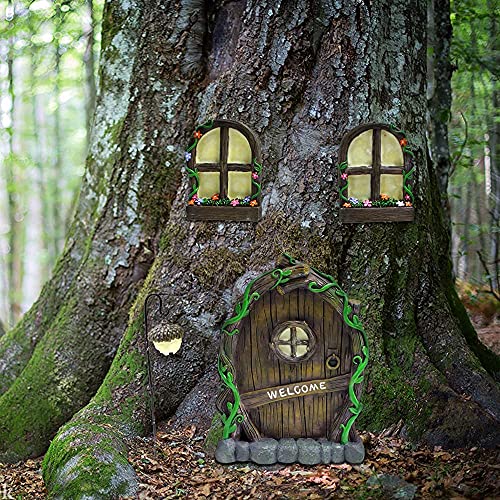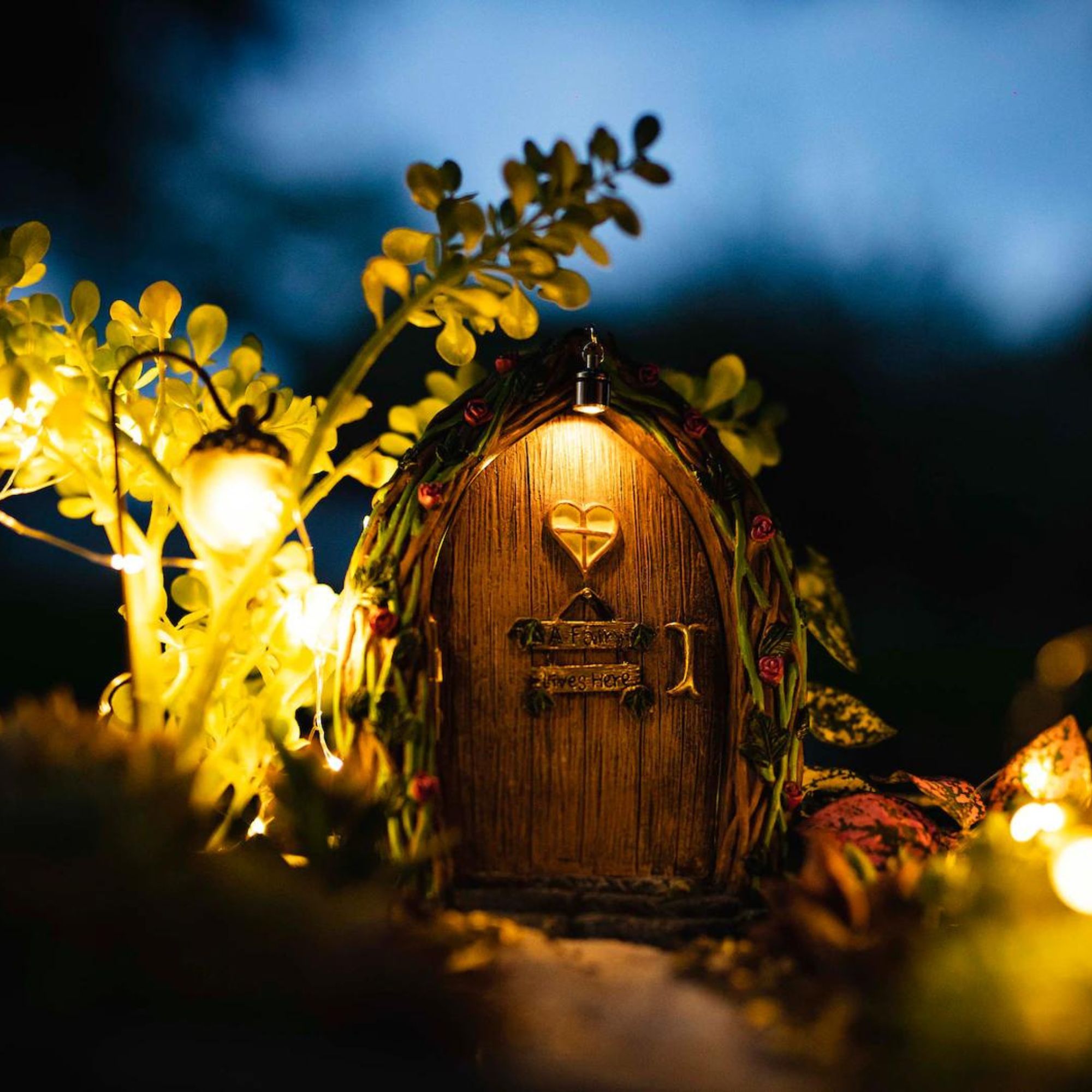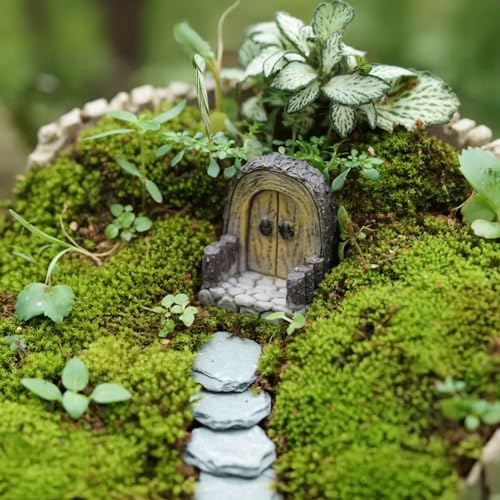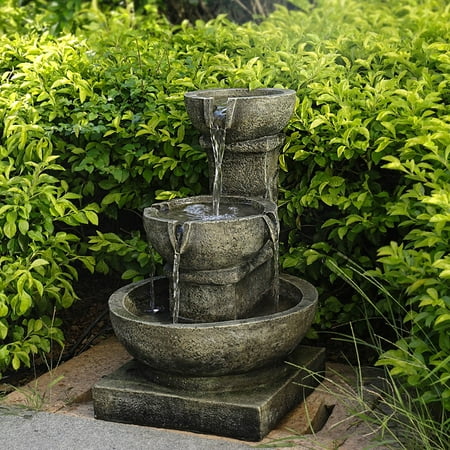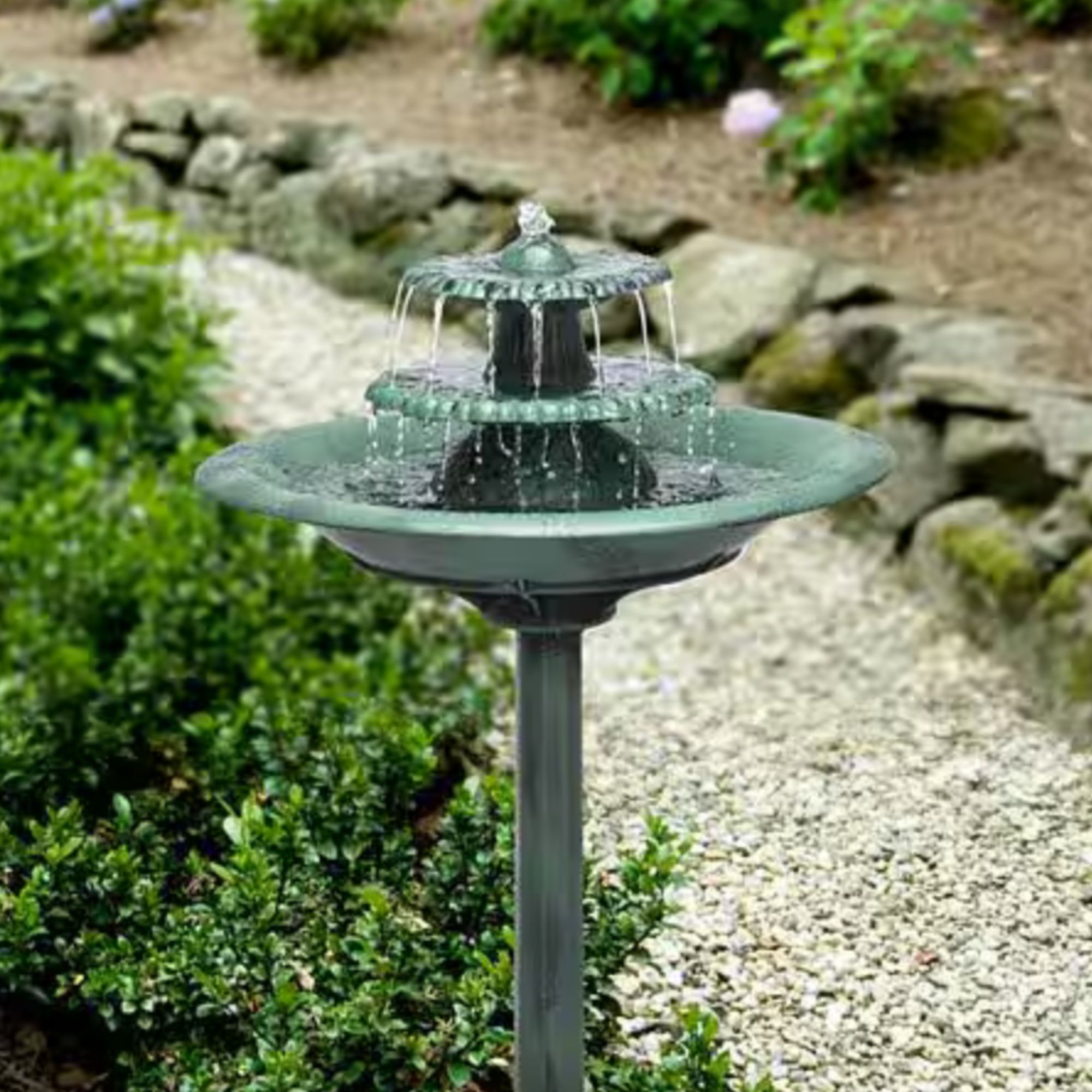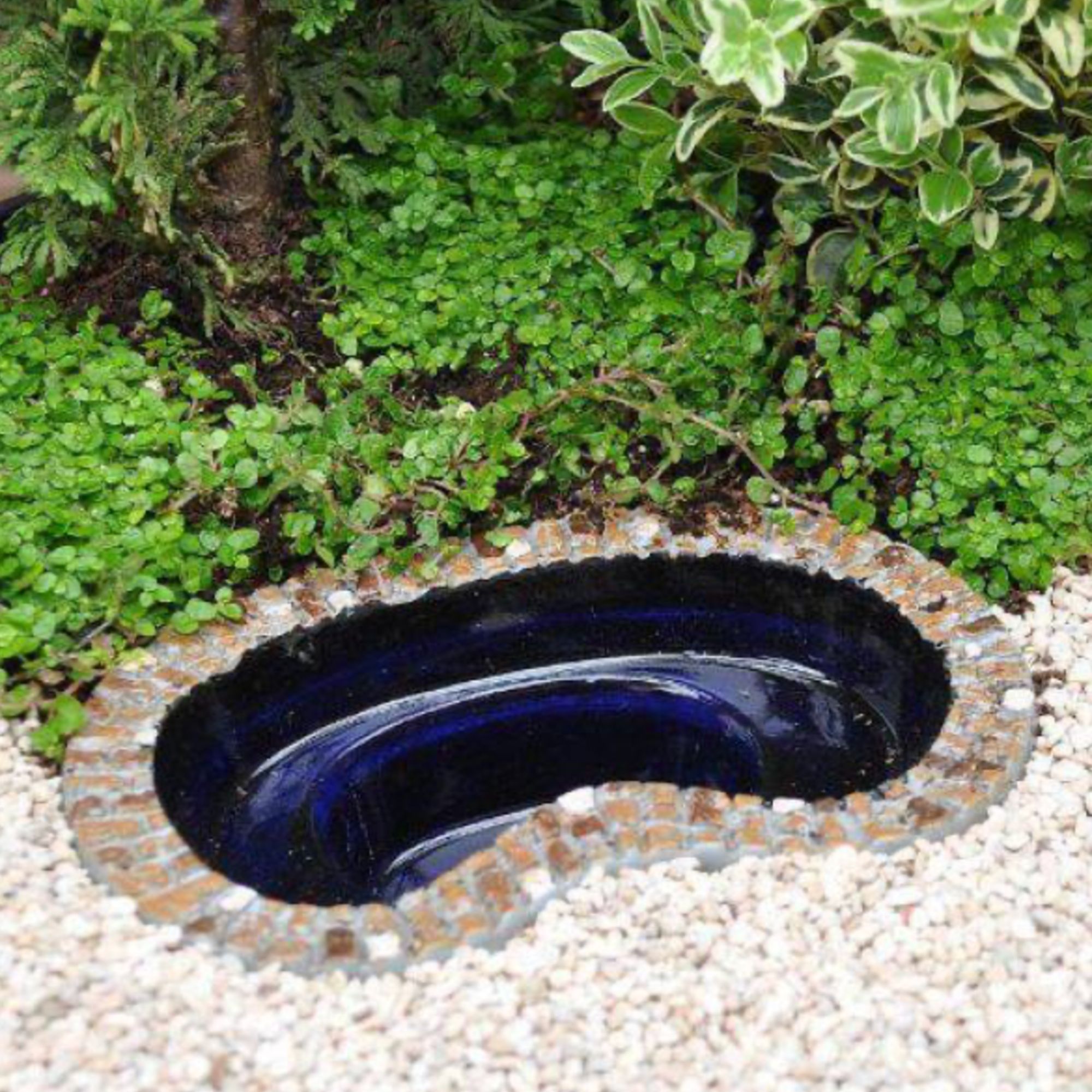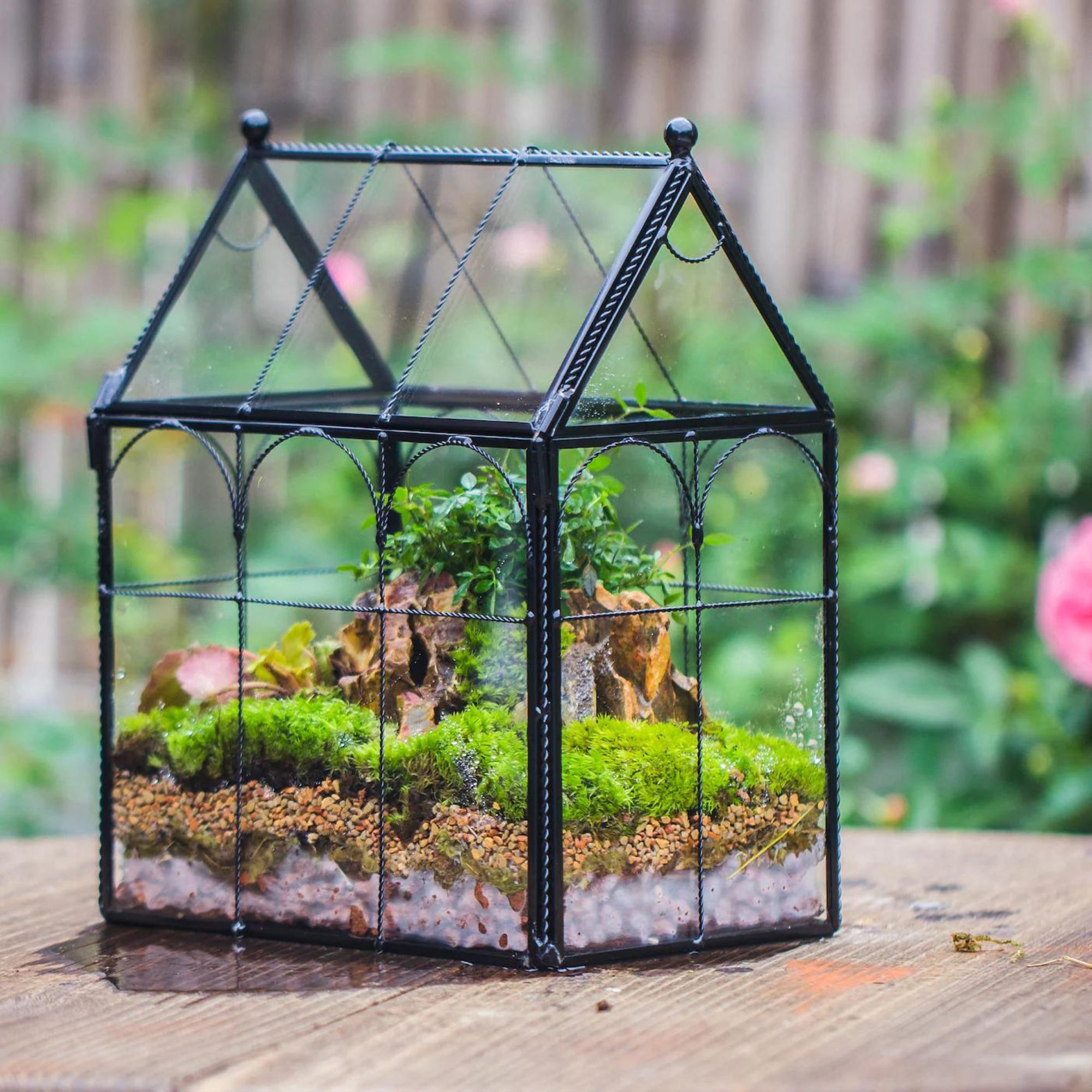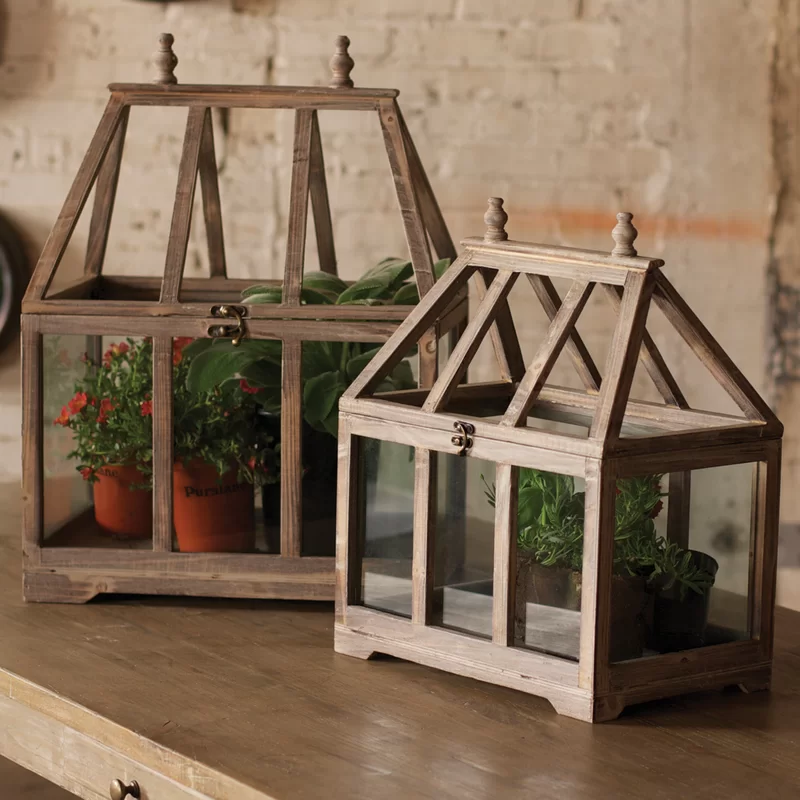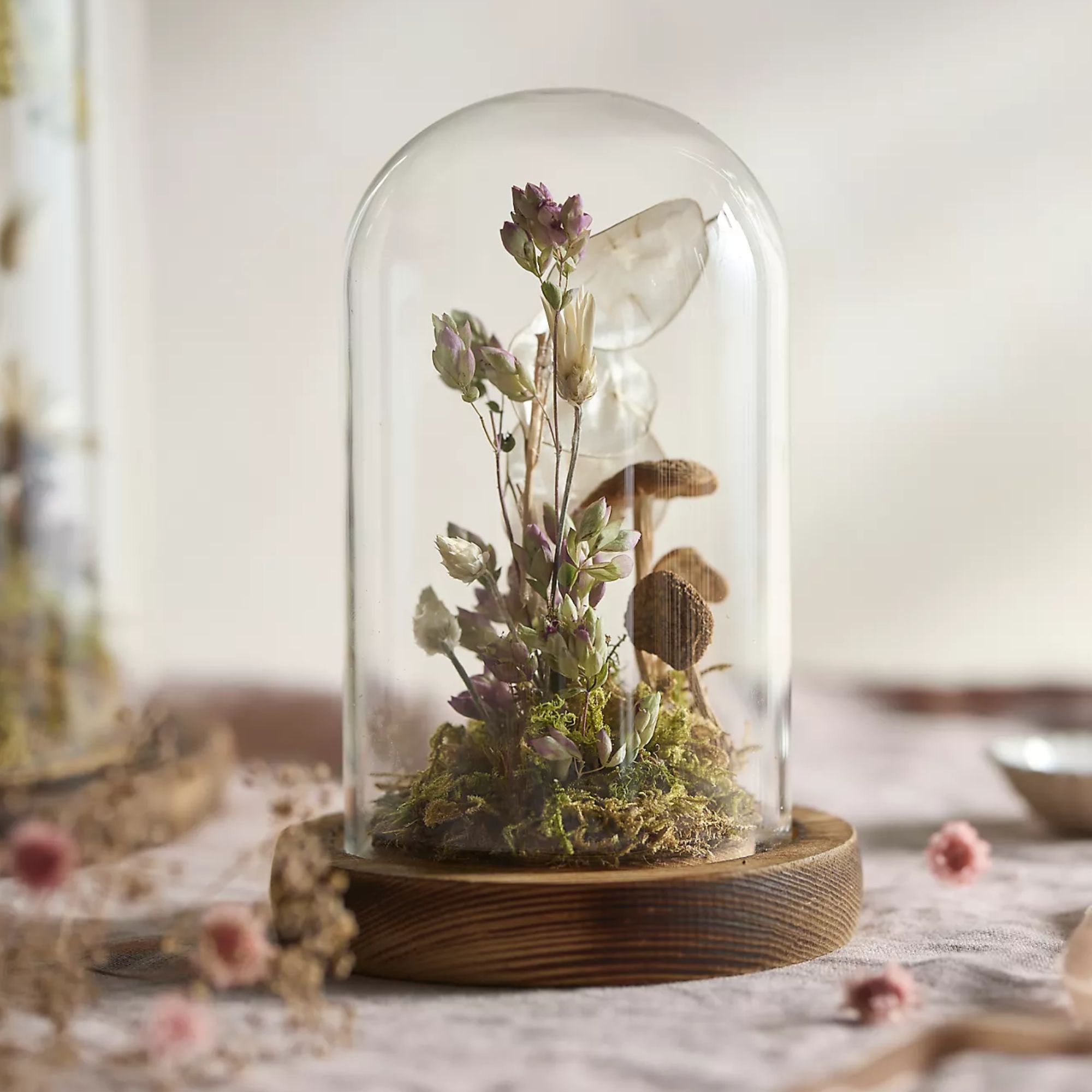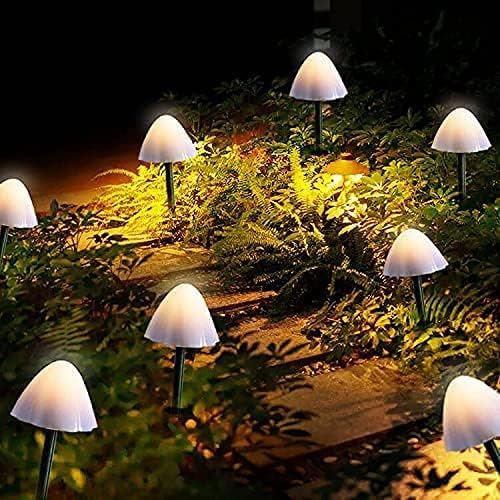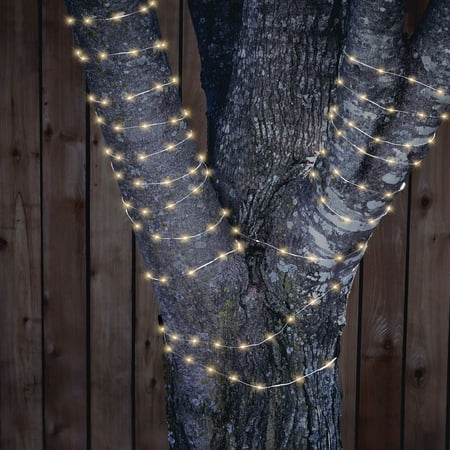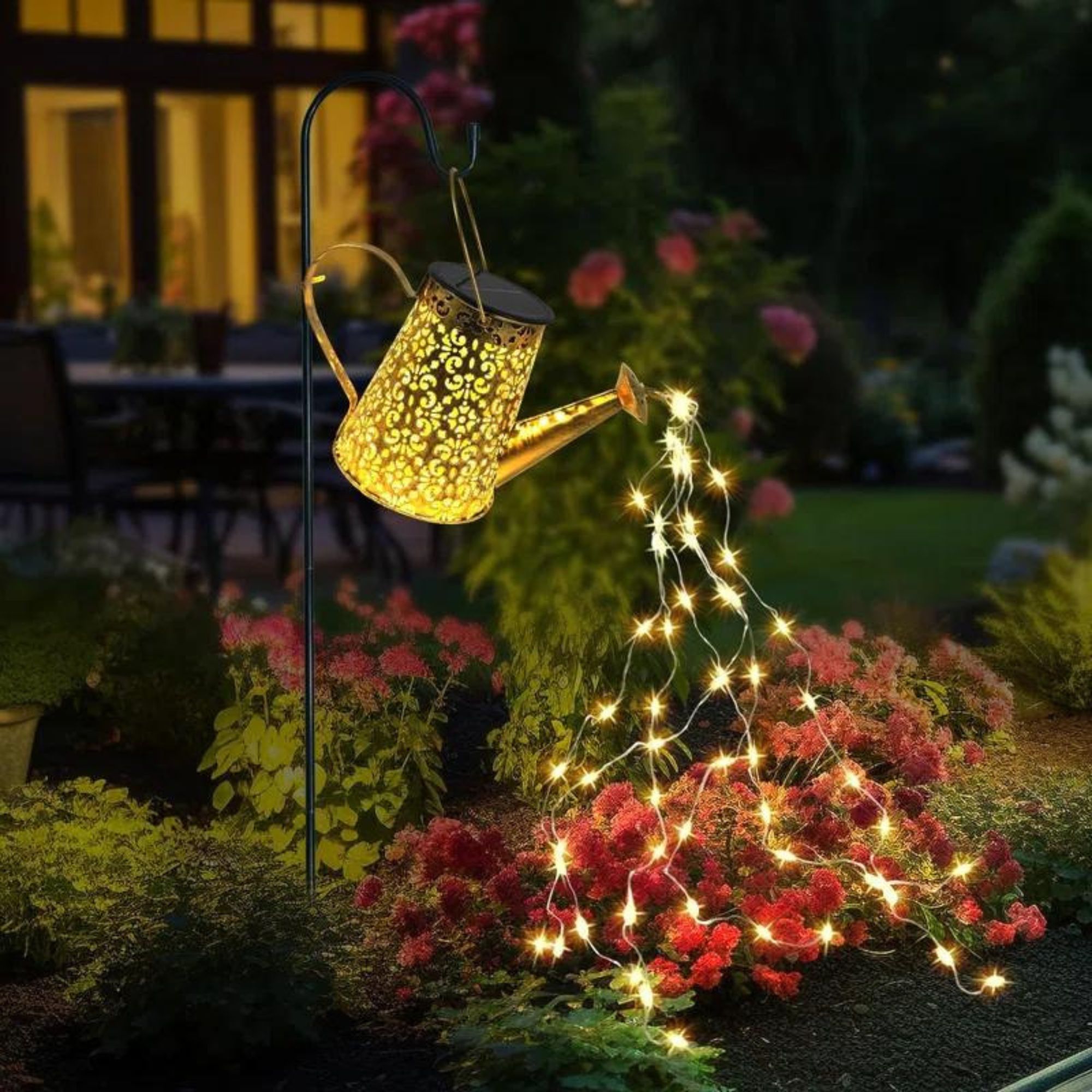7 enchanting fairy garden ideas – to bring a touch of magic to your backyard
These creative ideas will help you transform corners of your yard into enchanting little spaces

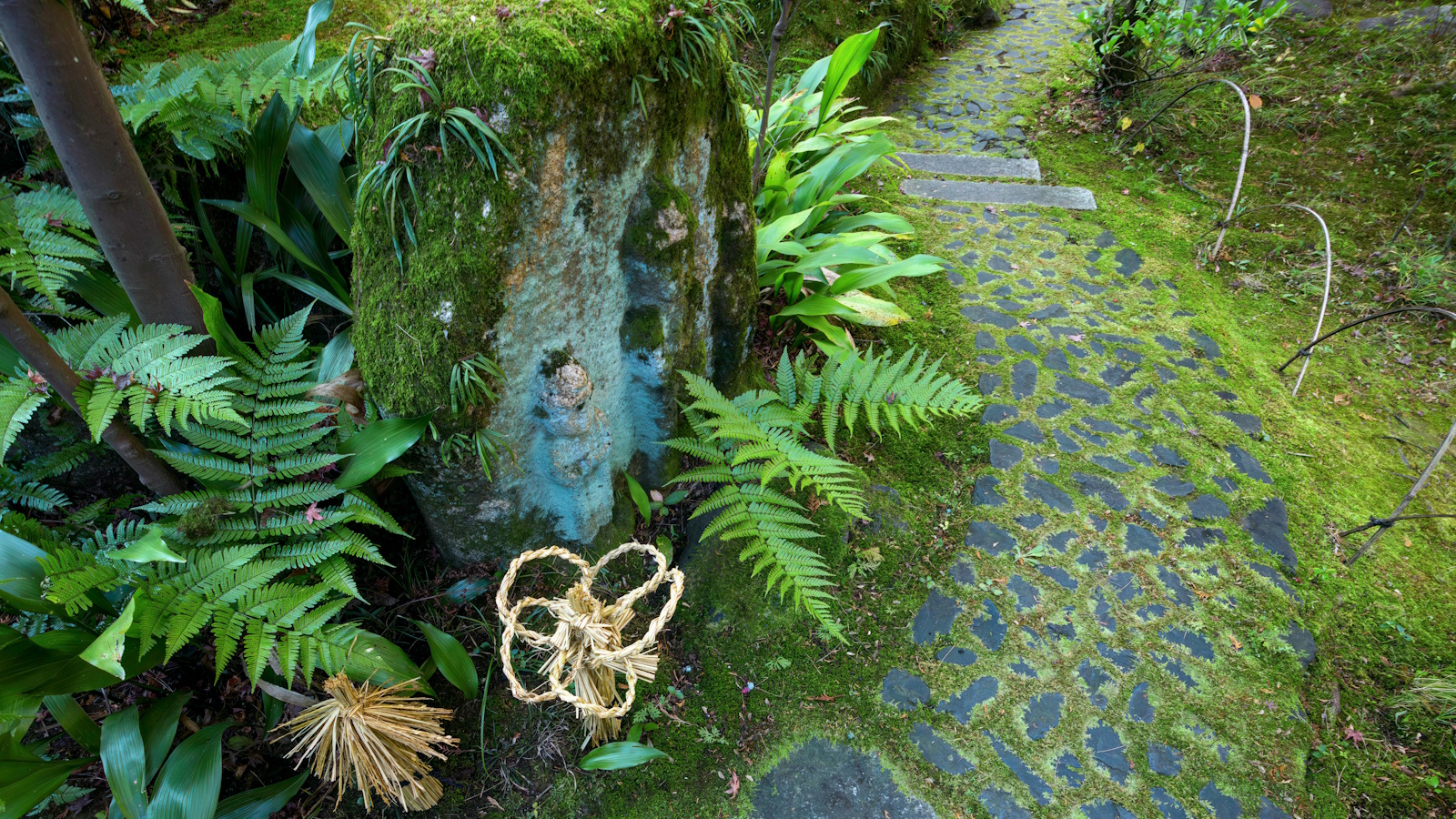
There’s something undeniably charming about the idea of fairies making their home in our gardens. The thought of these tiny, mystical creatures hiding among the blooms and greenery brings a sense of wonder and delight to any outdoor space.
While fairies may belong to the world of storybooks, the joy of creating whimsical corners in your garden is very real. Building a 'fairy garden' for your children or grandchildren to enjoy can be a fun and surprisingly therapeutic activity – and these small spaces can be crafted in no time at all.
From shaded nooks and tree stumps to tiny rock gardens and miniature jam jar displays, the era of fairy gardens filled with plastic figurines and toy fishing rods is long gone. Today, there are countless fairy garden ideas that seamlessly blend whimsy with elegance, allowing you to bring fairytales to life without sacrificing style.
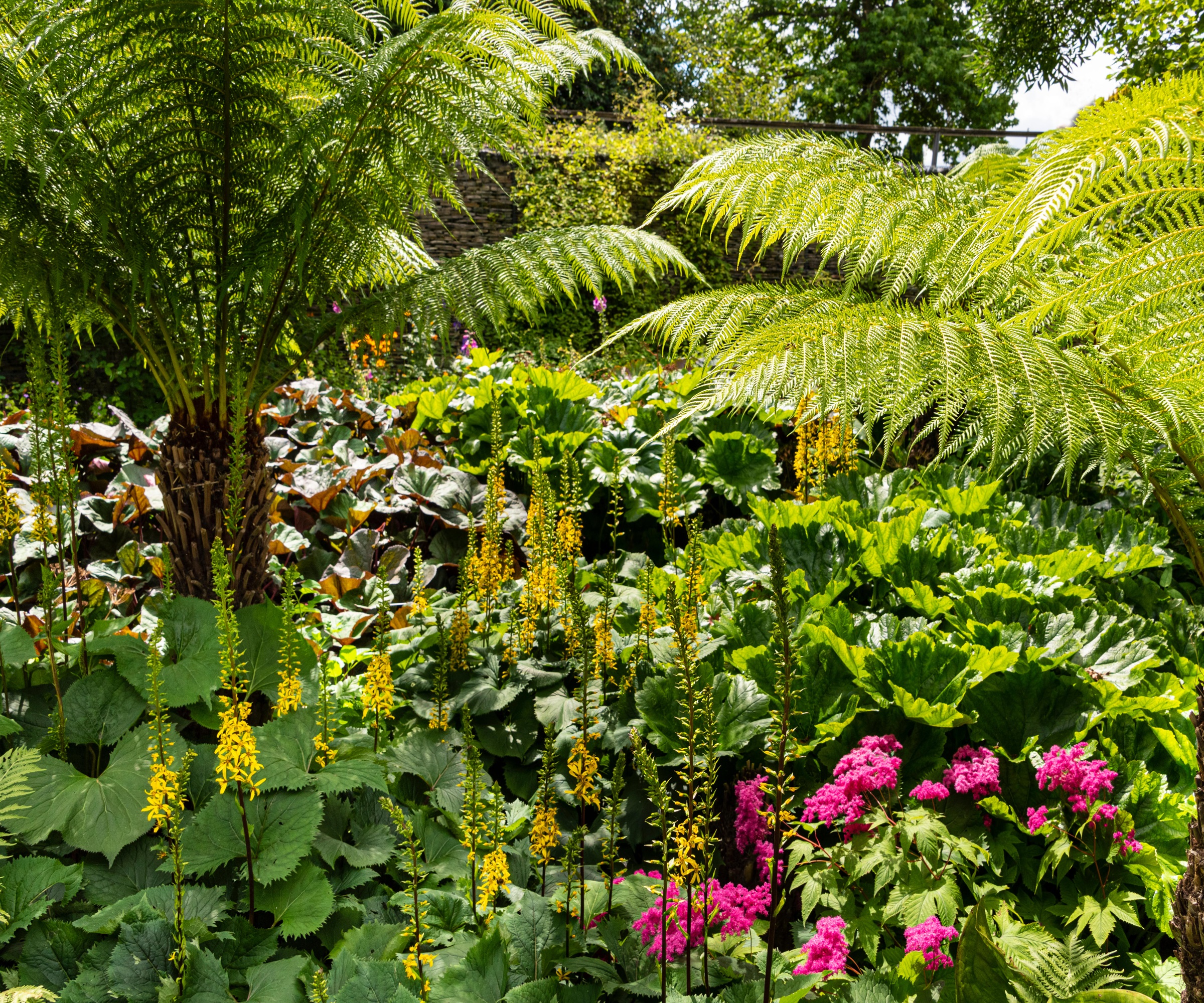
Enchanting Fairy Garden Ideas
'When you're thinking about where to place a fairy garden, it's all about finding that perfect spot where magic can come to life,' says Brad Saunders, President of Heroes Lawn Care. 'A fairy garden thrives in a location that's a bit tucked away – somewhere peaceful and quiet. Picture a corner of your yard that feels like a little escape, maybe near some trees or by a garden bed where the world slows down just a bit. It's that spot where you almost expect to see a fairy flitting by if you look closely enough.
'You want to choose a place that’s surrounded by natural elements – trees, moss, soft grass – something that already feels like it belongs in a fairy tale. It’s important to make sure the space is cozy and inviting, not just for you, but for anyone who might come across it. Kids, for instance, should be able to play and imagine without stepping out of the magic. It’s that sense of comfort and warmth that really makes a fairy garden special.'

Under Brad Saunders' leadership, Heroes Lawn Care has become known for its holistic approach to lawn care, ensuring every detail contributes to a healthy, beautiful landscape. Brad’s dedication to eco-friendly practices and innovative solutions makes him an ideal source of inspiration for crafting fairy gardens that are as sustainable as they are enchanting.
1. Create Fairy Gardens Inside Hollowed Out Trees
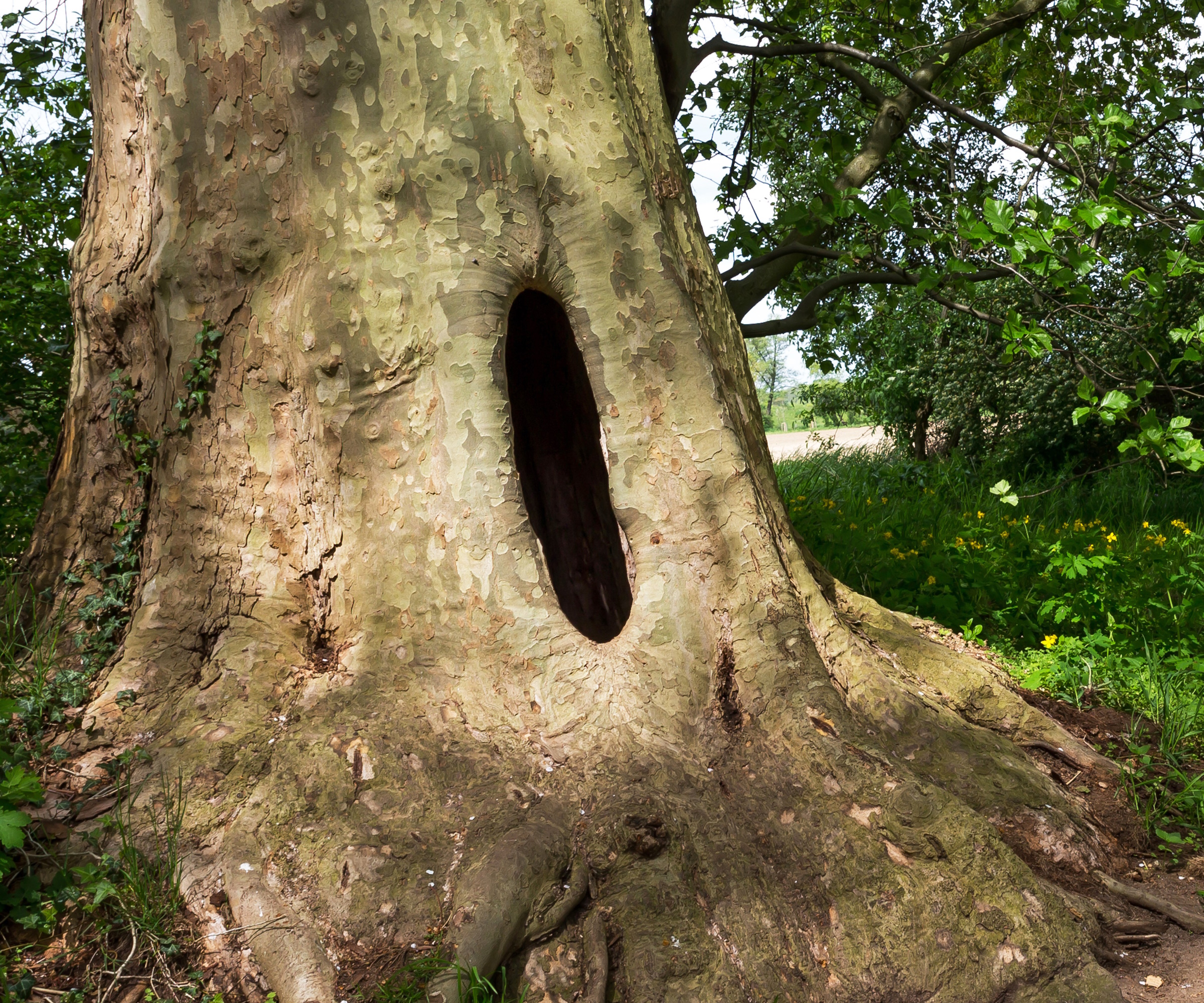
Having spent years working as a certified arborist, Ben McInerney, Founder of Go Tree Quotes, has discovered that the most enchanting fairy gardens often sprout from unexpected places, such as hollowed-out tree stumps or the gnarled roots of an oak tree.
'These natural formations create ready-made fairy dwellings that seem to whisper stories of ancient forest spirits,' says Ben. 'One of my favorite projects involved transforming a client's dead tree stump into a multi-level fairy apartment complex. We carved windows and doors into the stump, added tiny balconies made from bark, and even installed a working water feature that trickled down through the levels. It was like giving new life to a fallen giant, and the result was truly magical.'
Design expertise in your inbox – from inspiring decorating ideas and beautiful celebrity homes to practical gardening advice and shopping round-ups.
The natural decay of tree stumps can add an element of time and mystery to your fairy garden and these natural features invite you to get creative. Try tucking small plants into crevices, use moss to soften the edges, and even add tiny stepping stones leading up to the doors. You should aim to create a miniature world that feels like it’s been hidden away for centuries, just waiting to be discovered.
2. Add Fairy Doors To Trees
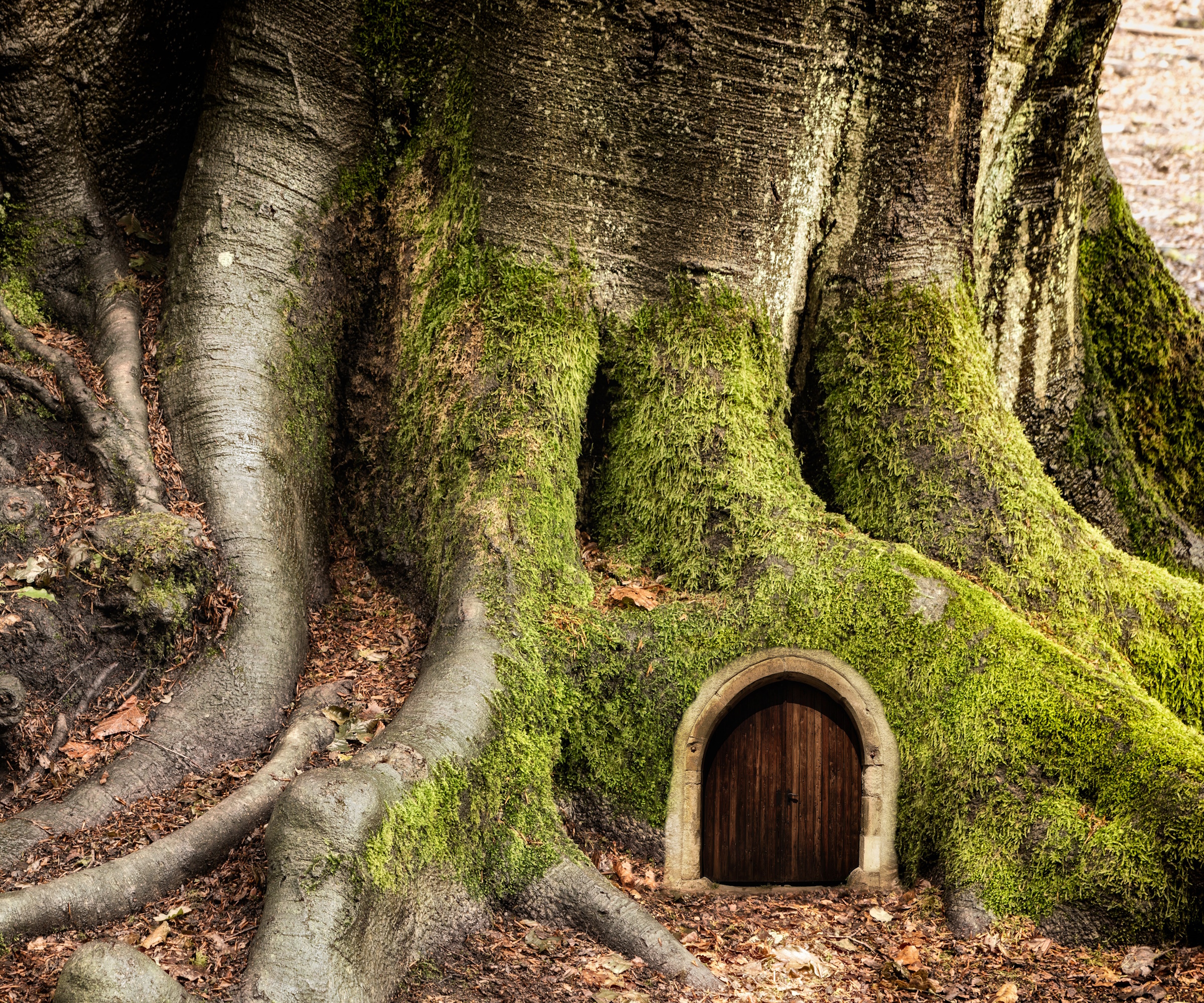
The easiest way to embrace the fairy garden trend is with the simple addition of a ‘fairy door’ at the base of a tree or a large planter. These tiny portals hint at a hidden world just beyond the bark or stone, and ‘installing’ them requires very little effort.
You can opt for a small rustic wooden design if you want your fairy door to blend with a tree’s natural texture or you could go for a brightly colored, ornate design if you want to up your fairy’s curb appeal.
To make your fairy front door feel bespoke, add tiny details like little solar lanterns, and mossy pathways, or add miniature potted plants, to make the door look lived-in and inviting. If you want to try a DIY craft project with the kids, you could even recreate your own front door design, with tiny painted signs or house numbers.
3. Create Them Alongside Water Features

According to Jennifer Cassels, President of The Blissful Place, water features like ponds, fountains, or small streams offer an ideal setting for a fairy garden, adding an extra layer of enchantment through the sights and sounds of flowing water.
‘You may consider putting a rustic bird bath to attract feathered visitors or include an eco-friendly yet enchanting solar-powered fountain in your space,’ says Jennifer. Use small pebbles or gravel as a base, then arrange miniature water-loving plants and fairy accessories around the edges or in shallow water. Add a few elegant floating decorations like tiny lily pads to complete the look.
For larger ponds, consider adding miniature bridges or stepping stones that appear to float gracefully over the water, guiding the way to small islands of moss, miniature water lilies, or the stylish mosaic plant, Ludwigia Sedioides. To enhance the magical atmosphere at night, you can also submerge small, waterproof LED lights beneath the surface, illuminating your fairy garden with a soft, enchanting glow.

Jennifer is President of The Blissful Place, an online resource for quality outdoor furniture, planters, and bird baths.
4. Terrariums and Containers
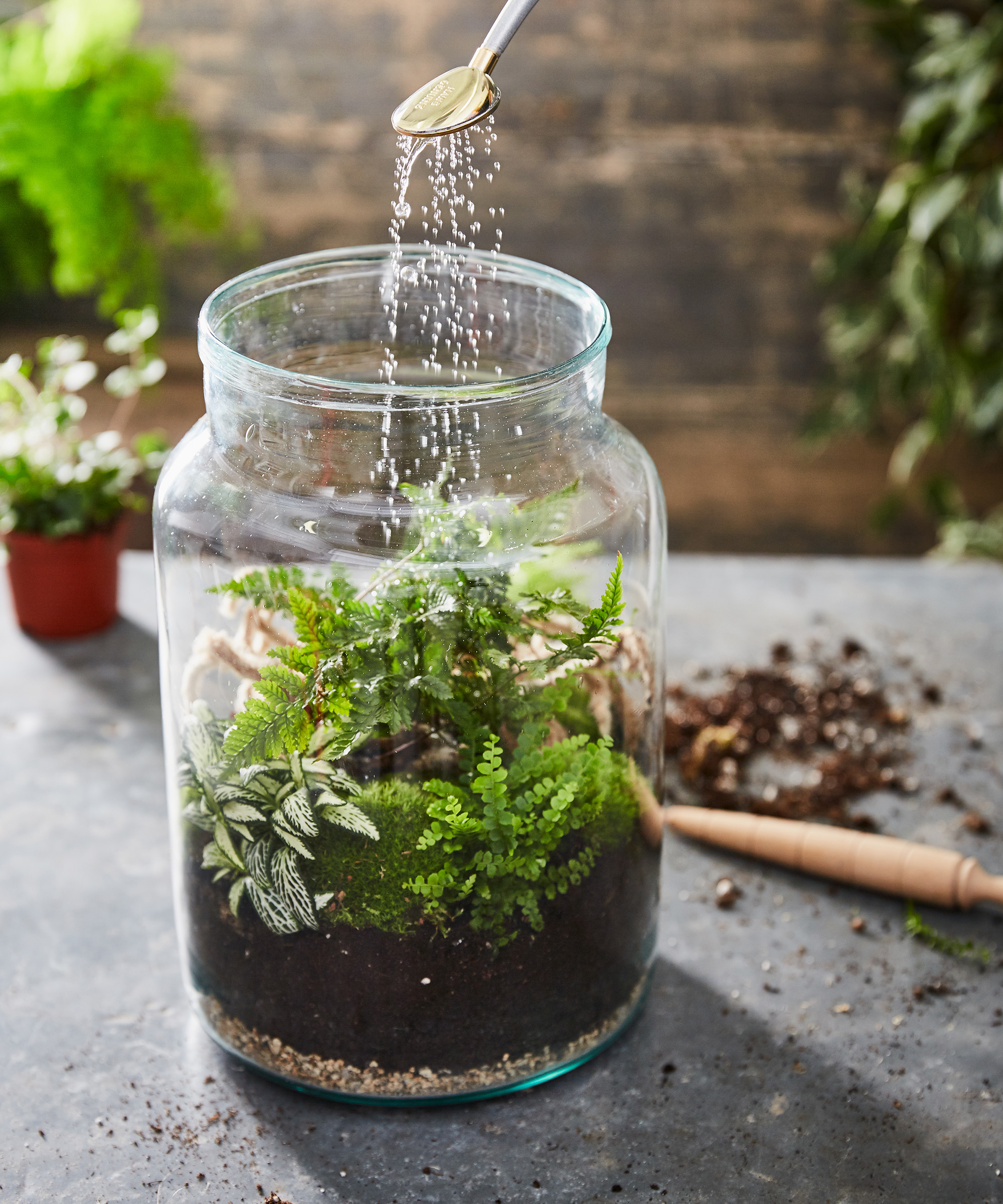
If you have a small backyard with limited space, you might want to consider creating a fairy garden inside a container that can be placed on a garden wall or nestled in a shaded corner of your yard. Containers, such as an elegant jam jar, a glass terrarium, or a shallow pot, are perfect for housing miniature landscapes such as mosses and miniature plants.
Making a terrarium is simple. Start by layering the bottom of the container with pebbles for drainage, then add soil, tiny plants, and fairy-sized decorations like tiny houses, bridges, or even a miniature swing. Think of this project as creating a mini fairy ecosystem, complete with its own microclimate.
5. Rock Gardens
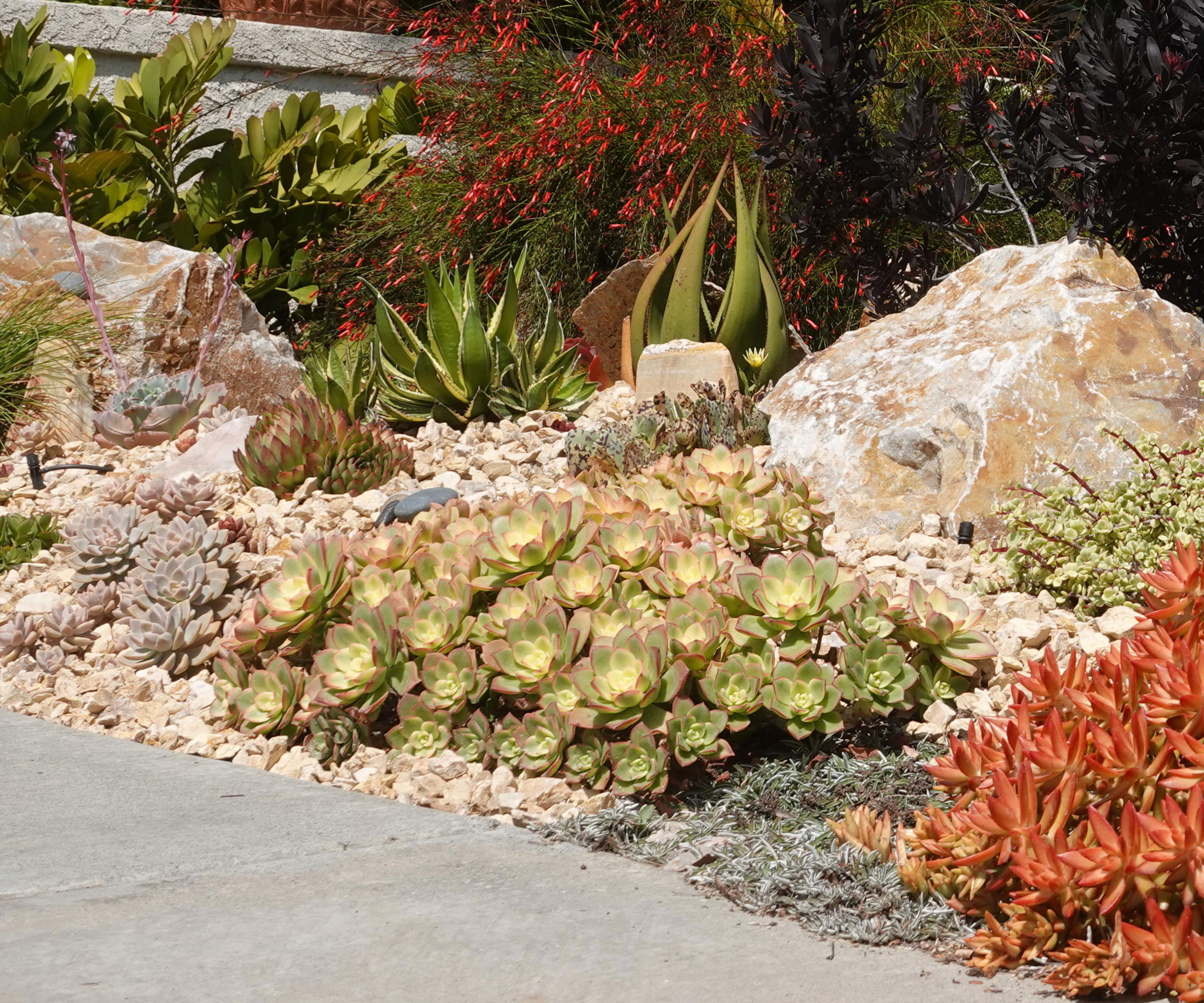
While fairy gardens often conjure thoughts of dainty flowers and perfectly manicured cottage gardens, there’s nothing to stop you from creating a rugged and mountainous fairy landscape with a whimsical rock garden.
The contrast between the rough texture of the rocks and the delicate fairy elements will no doubt create a captivating little garden that feels both ancient and alive with tiny creatures.
The natural crevices and varied heights of rocks provide excellent spots for tucking in miniature plants and fairy houses. Use wide flat stones to create pathways or bridges, leading to hidden fairy dwellings nestled among the rocks, and consider adding tiny succulent cuttings or alpine plants that thrive in the well-drained environment of a rock garden.
6. Feature Enchanting Lighting
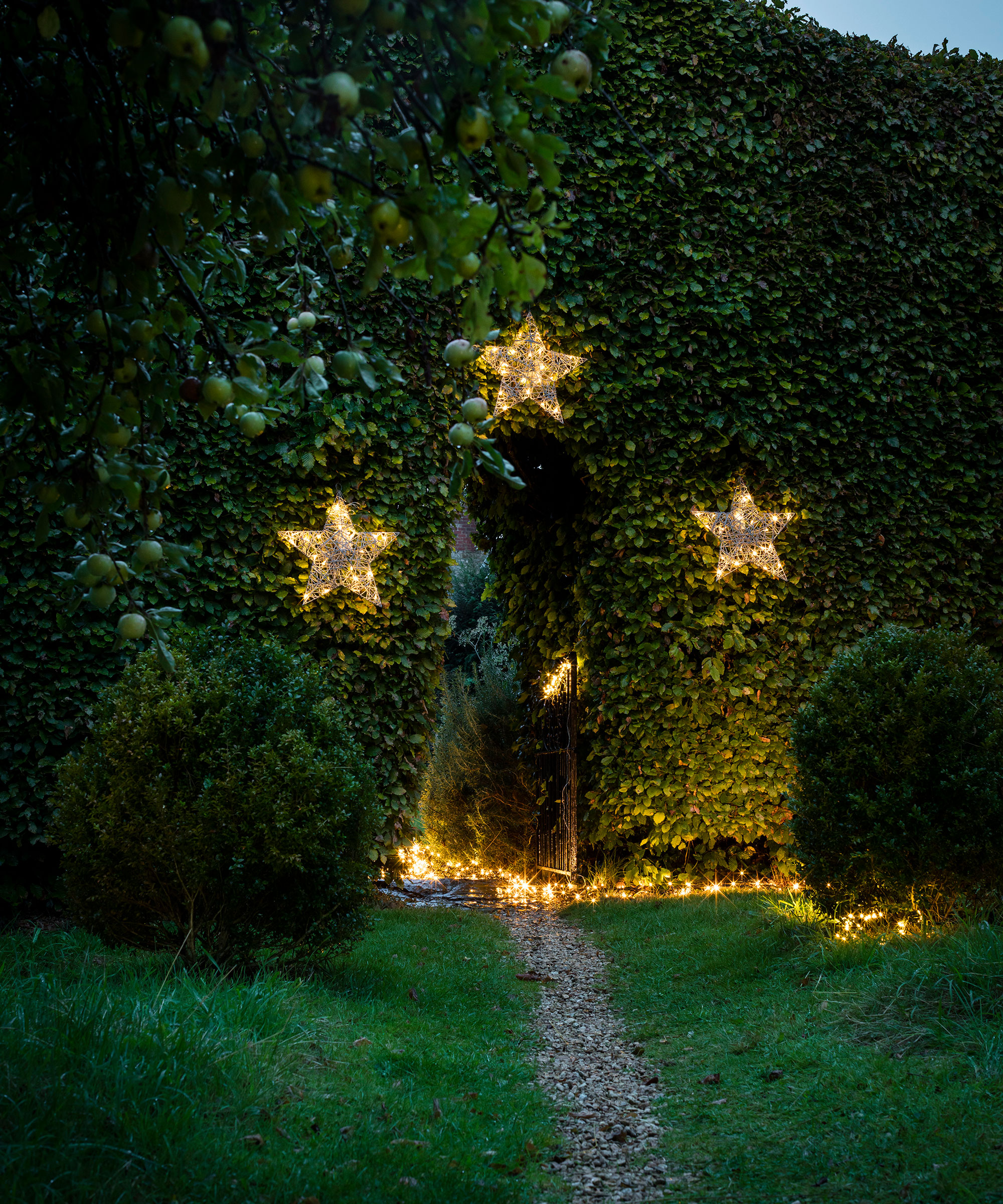
Garden lighting is a key element in bringing your fairy garden ideas to life. Consider adding strings of delicate, solar-powered lights to evoke a sense of wonder when the sun goes down. Whimsical ideas include tiny toadstool-shaped lights popping up from the ground, and miniature butterfly lanterns discreetly among flowerbeds to create a subtle, magical ambiance. String lights, artfully draped over teeny tiny branches or woven through the foliage, can add a soft, twinkling effect too.
When selecting lights for your fairy garden, it’s important to consider the practicality as well. Opt for solar-powered or low-voltage LED lights that are energy-efficient and safe for outdoor use, and ensure they are weather-resistant (especially if you’re positioning them near a water feature).
Much like selecting the right Christmas lights, it’s best to avoid overly bright lights that could disrupt the natural tranquility of the space. Instead, focus on creating a soft, ambient atmosphere. For a touch of mystery, you may also want to tuck small LED lights inside fairy houses or beneath miniature bridges to cast intriguing shadows that suggest a hidden world waiting to be discovered.
7. Select Whimsical Plants
When considering plants for your fairy garden, look for varieties that stay small and compact, offering a variety of textures, colors, and shapes to bring your fairy world to life. Ground covers, tiny flowers, and dwarf shrubs are all excellent choices, as they create a sense of scale and depth in your garden. According to Brad Saunders, some good choices include:
- The Silver Sprinkles plant, Pilea glauca, is fantastic for creating a soft, textured ground cover. It’s low-growing and roots along the stems, which gives your garden a lush, carpet-like feel. It’s delicate but tough enough to handle a bit of sun, just be sure to let the top inch of soil dry out before you water it again.
- If you’re looking for something a bit more structured, Weeping Fig, or Ficus benjamina, is a great choice. With its tiny, lime-colored leaves, it’s ideal for bonsai or miniature gardens, adding a sense of sculpted elegance to your fairy space. It’s a plant that thrives in well-drained, moist soil, so it’s perfect for those who appreciate the art of gardening.
- For a pop of color, you can’t go wrong with the Polka Dot Plant, Hypoestes phyllostachya. Available in shades of pink, red, or white, this one’s a favorite among fairy gardeners for good reason. It adds bright, cheerful spots of color that are sure to catch the eye. And the best part? You can keep it compact and neat by simply pinching the tips. Pink splash polka dot plants are available at Walmart.
- If you want something that’s both aromatic and visually striking, consider Gray Lavender Cotton, Santolina chamaecyparissus. Its gray or green foliage can be trimmed and shaped, making it a versatile choice for adding structure to your garden. Plus, it’s drought-tolerant, so it’s a low-maintenance option that still offers bright yellow blooms in the summer.
- For a more vibrant, sunny touch, Golden Japanese Stonecrop, otherwise known as Sedum Ogon, is a fantastic pick. This sedum’s bright golden foliage really stands out and it thrives in the gentle morning or evening sun. It’s tough, too – this plant can handle hot weather and even some drought, making it as resilient as it is beautiful. Find golden Japanese stonecrop succulent plants at Etsy.
- And for a bit of whimsy, don’t overlook Wood Sorrel, or Oxalis. With its pink and purple leaves and bright yellow flowers, it adds a playful yet sophisticated element to your garden. It’s non-invasive, so it won’t take over, but it will certainly add a lot of character. Vibrant wood sorrel plants can be purchased at Etsy.
With a bit of creativity and attention to detail, it’s possible to embrace the fairy garden trend in a way that feels both stylish and sophisticated. The secret is in choosing the right plants and elements.

Gabriella is a freelance contributor for Homes & Gardens. She is a DIY enthusiast and a lover of all things interior design, often found antiquing or browsing the aisles of her local hardware store. She has a particular passion for historic buildings and is in the process of renovating a Victorian coachhouse in the countryside.
For much of the past decade, Gabriella has worked as a freelance writer, crafting copy for national publications and renowned homeware brands. Most recently, she worked for Homebuilding & Renovating Magazine and is the former Head of Solved at Homes & Gardens, focusing on case studies for the magazine and website, as well as writing features about issues surrounding historic and listed building projects.
